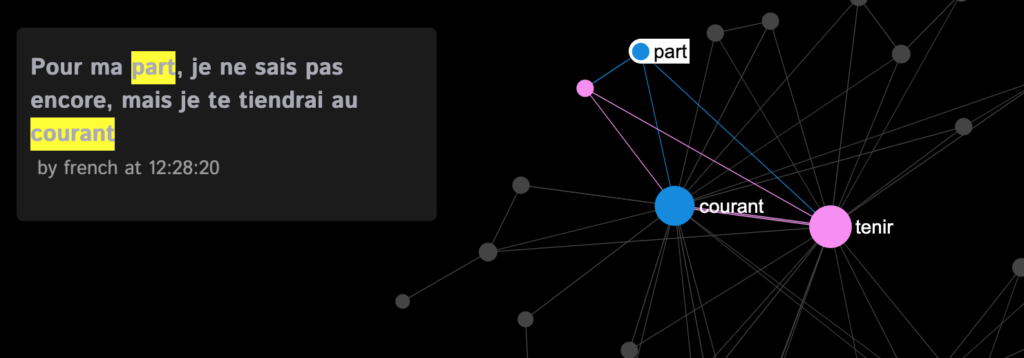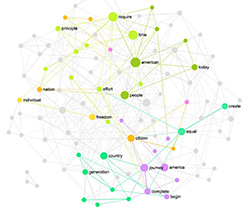Posted by Nodus Labs | August 16, 2020
Learning a New Language Using an Online Network Visualization App
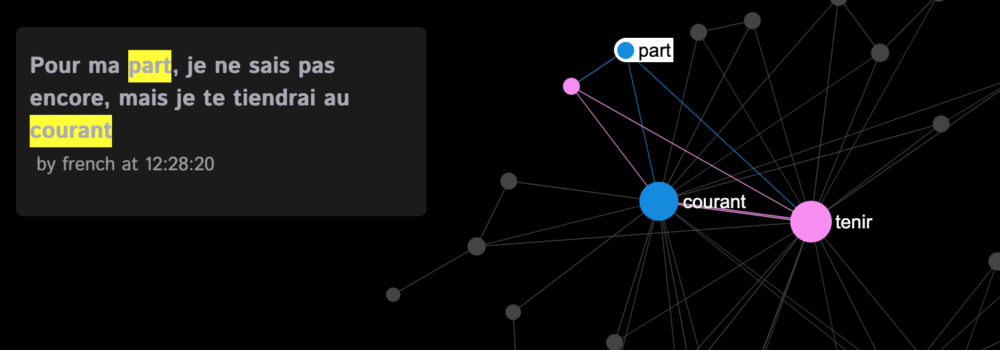
When we learn a new language, context is very important. Text network graphs can be used to help students learn how to use the new words and phrases in context, by making the new connections between the disjointed parts of the graph.
In this article we will demonstrate how network visualization can be used as an heuristic device to learn a new language. The approach that we propose is based on facilitating the process of contextual learning using the text network graph visualization.
Consider a situation where a student has an online class on one of the MOOCs or language-learning platforms like Lingoda. One of the common approaches during a lesson is to write down the new words and phrases. The best way to learn them is to construct the new sentences using these words and phrases. That’s where the network graph comes in.
In this demonstration we will use InfraNodus text network visualization app to visualize the French phrases that we wrote down during a lesson:
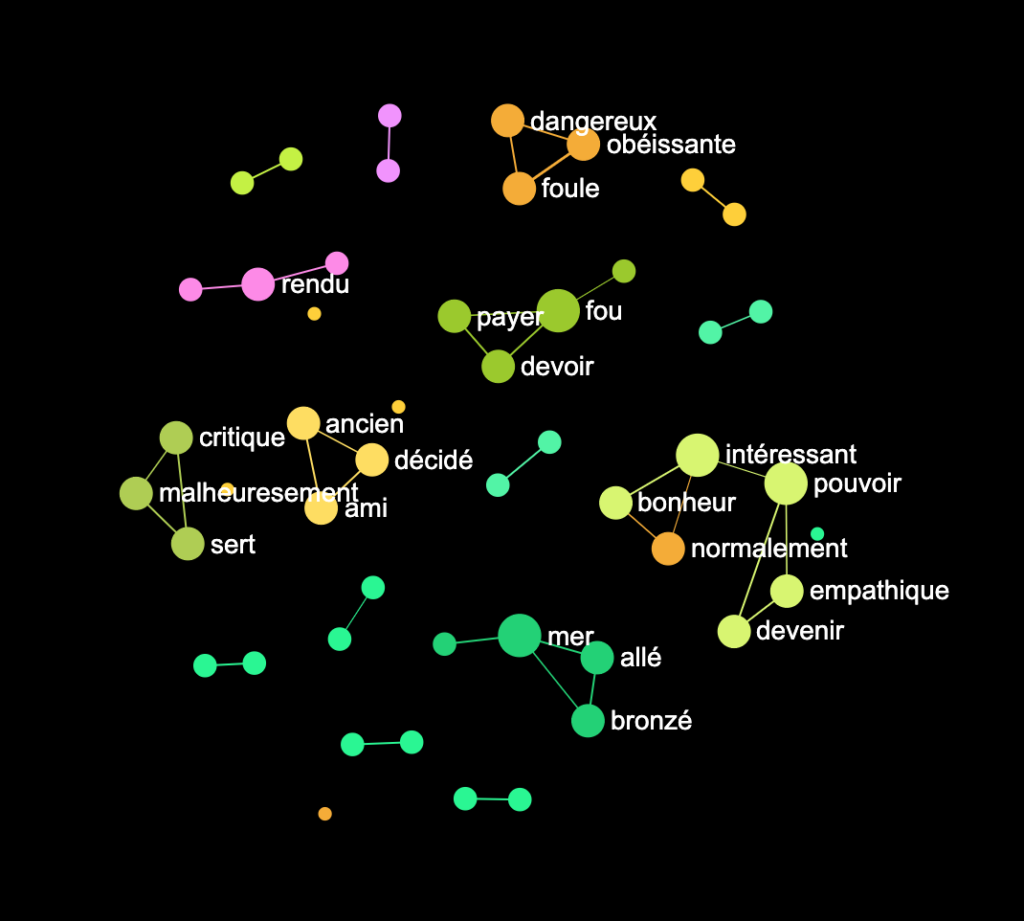
As you can see the knowledge that we’ve accumulated so far is quite dispersed and it’s a pretty good representation of how this information is stored in our brains: disjointed bits and pieces of words and phrases that are not linked together.
One of the main tasks during the process of learning a new language is to be able to make connections between the words and the phrases in order to produce coherent meaning. So the graph above could be used to start making new links between the different sentences.
The task of the student, in this case, is to start making connections between the different parts of the graph. They will be effectively creating the new semantic links, using the text network representation as a tool to make new connections. For instance, what phrase can we use to connect “retour” (come back) and “important” to “voir” (see) and “pouvoir” (can)? This open question stimulates the student to construct a new phrase using the vocabulary they are learning, practicing the new words and phrases. For instance, “Faites-moi un retour quand vous pouvez et je vais voir si c’est possible” (Let me know when you can and I’ll see if it’s possible) .
Not only does the student practice to actively speak the language, but they also do it in a way that bridges the gaps between the disjointed bits and pieces of knowledge, making this information more interconnected in their brain.
Once we go through this process a few times, we will end up with a more interconnected graph like that:
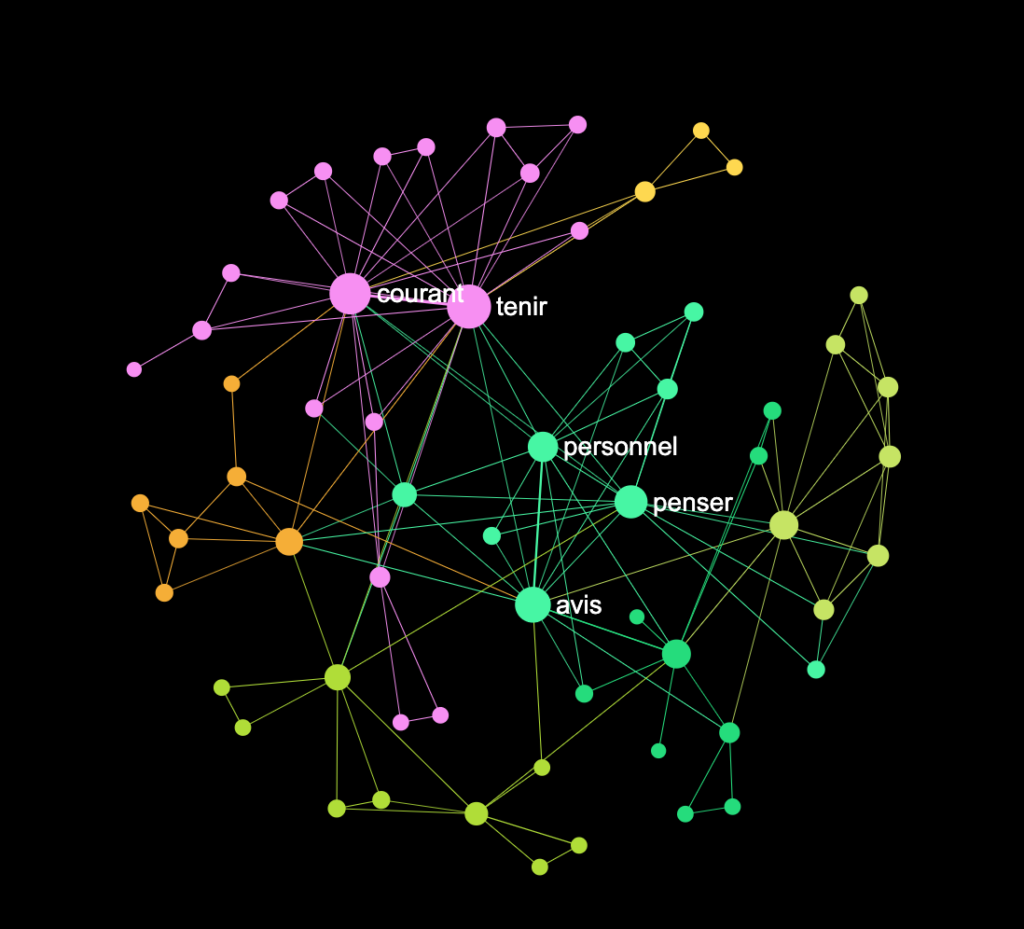
The network graph then provides a playful way to integrate and assimilate the knowledge through making playful associations between the disjointed parts of the language network.
The graph can also be used as a reference. Say, the student would like to see which context a certain word can be used in. They can simply click on the term and quickly get to all the phrases that contain that word (in any conjugation):
